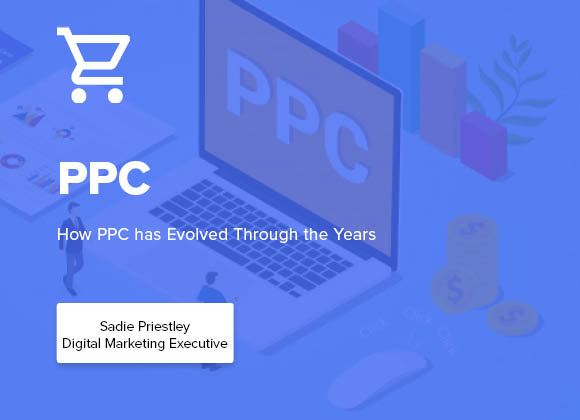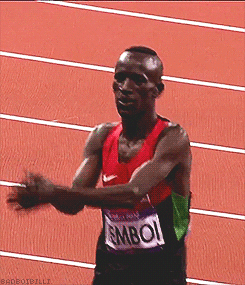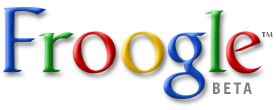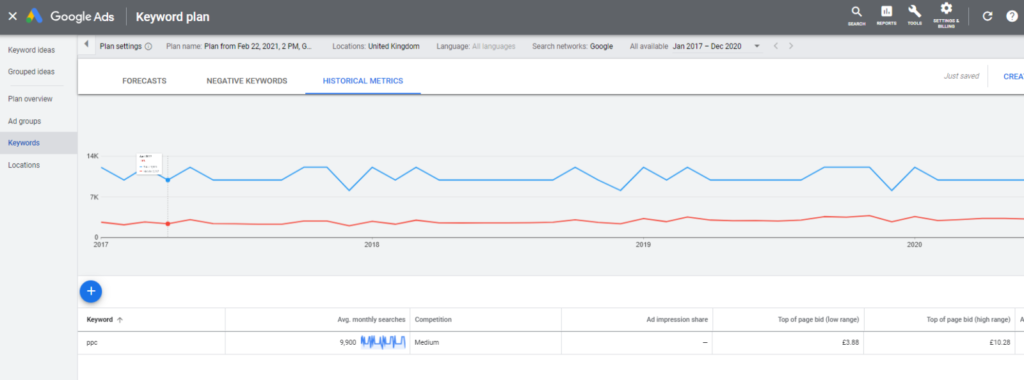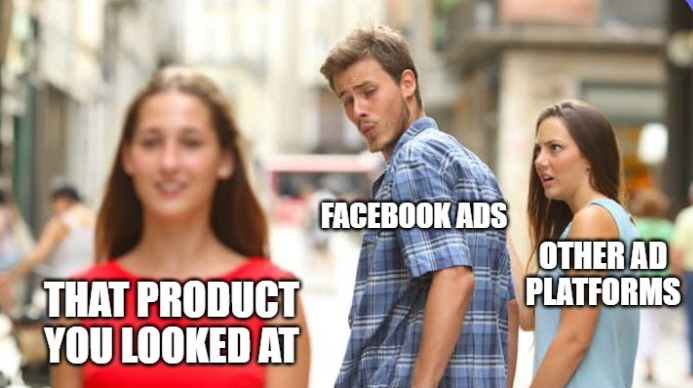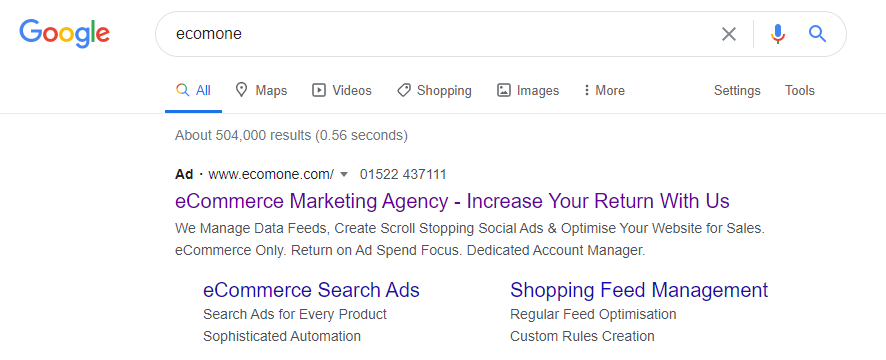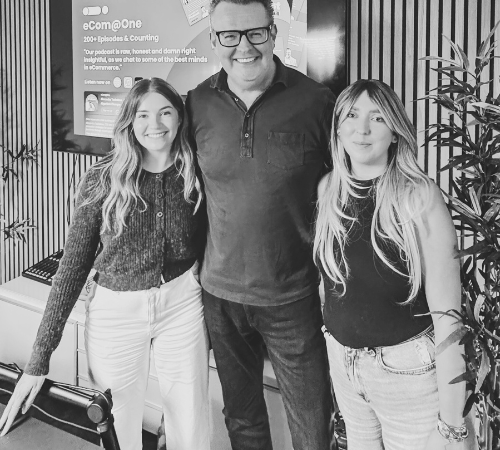It doesn’t take a Neuroscientist or in this case, a Digital Marketing Expert, to realise that there has been a drastic change in how businesses choose to advertise over the last few decades.
This blog is going to focus on Pay-Per-Click (PPC) Advertising and how it has evolved. I am going to be taking us back, not quite as far as dinosaur times but definitely before you owned a smartphone, to see how PPC has changed and developed. Small disclaimer, this blog will not cover absolutely everything as I would run the risk of my hands wearing away and no one wants that do they
1996: In 1996 a company named Planet Oasis launched the first PPC model. The site looked like a city and each business had its own little tower block or building. Companies that advertised on the site ranged from CNN to Warner Bros and they paid up to $10,000 to be featured on the home page with smaller companies still paying thousands to be featured in smaller areas of the site. However, many CEOs’ at the time said the idea of Pay-Per-Click Advertising was not one that they were fond of. They stated that they would prefer to pay a flat rate as they believed that the clicks they received through the Ads were not high-value visitors.
During this year, Open Text launched another PPC model. However, this one didn’t do as well as the founders hoped. This model allowed advertisers to bid on certain keywords (something that is popular in PPC today). At the time the advertisers were not happy. They felt that it was edging on bribery, like paying your child’s Headteacher to ensure he wins star of the week in the school assembly.
So, whilst PPC started 25 years ago, it definitely wasn’t to the scale or with the same principles as we are used to today.
1997: In September 1997 Google.com was registered as a domain name. At that period in time, it was probably just a concept in the founder’s mind. It definitely wouldn’t have been something for Planet Oasis to worry about. At the time they were being used by over 400 brands who were paying up to $0.25 per click, or the likes of Yahoo who were the largest online advertiser of the time.
1998: This year advertisers seemed to lessen their worry and distaste towards bidding on keywords, a company called Goto.com launched a PPC bidding system where advertisers competed against each other to decide which Ad would be shown on a website. This helped Goto.com make money but it also meant that the advertisers were paying less for the less competitive keywords and this showed as a great advantage to many companies.
This year would see advertisers paying up to $1 a click to try and be featured at the top. This may seem like a small amount compared to what some companies are willing to pay today but take into consideration the fact that in 1998 the bidding wasn’t done in real-time and in fact took several hours to be updated.
By the end of 1998, Google had officially become an incorporated company and whilst it was listed in beta, it was open to the public and its popularity was rising. Google was about to become the next best thing.
1999: By the end of 1999 Google had over 60 million web pages indexed and was seen as a force to be reckoned with. This is all leading to the world of PPC and advertising we know today.
2000: In 2000, newspaper advertising was reported to make $64 billion. By 2011 this had dropped to just $20.7 billion, whereas online advertising between 2000 and 2011 had grown by $66 billion, kind of crazy when you think about it. Whilst Google’s fame was rising, can we call it fame? I’m going to anyway. The most valuable online company of 2000 was Yahoo, this is due to the dot com bubble. I won’t go into too much detail about the dot com bubble because I don’t work in the stock market, but the dot com bubble which was alternatively known as the dot com boom happened because the stock market caused excessive speculation of internet-related companies in the late 1990s, which saw a period of massive growth in internet usage. We also can’t forget it was the year Google AdWords was launched.
2000 was a substantial year for PPC. It was the start of the millennium and the world was rumoured to explode, thankfully it didn’t. However, the world of digital marketing did. Every day Google was receiving over 18 million searches – now I know this blog has been Google heavy but where would PPC be without it? This was the year Google decided to include unintrusive Text Ads at the side of search results. This was due to the vast amount of search engines at the time running PPC Ads, Google needed to step up to compete.
Back to AdWords, lovely AdWords. Within its first few months, it had over 350 advertisers signed up to use the system. Unfortunately, at this time the world went into a financial crisis that hit many eCommerce companies hard. The dot com bubble burst after experiencing growth faster than an Olympic runner. They literally disappeared overnight. This made many people question the life span of countless dot com companies including Google and Yahoo, if only they knew how successful they would be twenty-one years down the line.
2001: The burst of the dot com bubble meant that many businesses shifted how they advertised. Putting emphasis on sharing information through their design and collaborations. By being more transparent and open with what they shared in their marketing they were able to build trust back with consumers. This form of marketing has been made increasingly easier over the years as we saw LinkedIn arrive in 2002, followed by Myspace in 2003, the ever-popular Facebook burst into our lives in 2004, Twitter in 2007, and my personal favourite, Instagram in 2010. Can you remember what your first social media account was?
2002: When I think of PPC, I think of Google but prior to 2002 Google charged advertisers based on a CPM (Cost per thousand impressions). I do wonder why it isn’t called CPTI. However, in 2002 Google started charging advertisers every time a user clicked on an Ad. Fast forward to today and Ads make up the majority of Google’s revenue. So, the world of PPC, as we know it, really started in 2002.
2003: In 2003, in its bid to gain a significant marketing advantage, Google spent over $100 million to obtain Applied Semantics. They were the makers of AdSense, a service that signed up website owners to run various types of Ads on their websites, a huge advantage for Google.
2004: A year for Google to celebrate as they reached $1billion in online advertising revenue and its market share reached 84.7%. Facebook also launched, your Great Aunt Karen can now easily comment on how short your skirt is and it’s a great way to keep in touch with friends, but you won’t find any Ads on this social platform for a few more years.
2005: The launch of YouTube. We can finally see a cat knitting itself a scarf at 3am and Charlie biting his brother’s finger, what more could we ask for? It was a few years until Ads started interrupting your video binge. Ads are one of the main incomes for many YouTube video creators today. Google had a busy 2005. They launched their own campaign management service called Jumpstart, a Google Advertising Professional program to certify AdWords users. Google acquired the software corporation Urchin Software Corp that allowed them to develop Google Analytics, an amazing analytics tool. I recommend the Google Analytics Advanced course in Google Skillshop to learn more.
2006: In 2006 Google acquired another web advertisement company called Marc Broadcasting for $102 million and declared they would pay up to $900 million over a 3-year period to secure the rights to sell Ads on MySpace.com. AdWords Editor was also released in beta, this tool can be downloaded to your computer and allows you to edit your campaigns even when you’re offline and syncs to your AdWords Account. I personally recommend AdWords Editor for bulk adjustments such as applying Ad schedules to multiple campaigns. Google purchased YouTube this year for $1.6 billion, though this probably doesn’t come as a surprise with their apparent buying power. Local business Ads were also released. This type of Ad allows businesses to show up on Google Maps as sponsored links and will appear to people searching for relevant services and products within the area to help direct them to a brick-and-mortar store.
2007: In 2007 Google paid the most it had paid to date spending $3.1 billion buying an online advertising firm called DoubleClick, it was clear they were determined to buy out their competitors and become the biggest and best in online advertising. At this time Mark Zuckerberg, the Founder and CEO of Facebook, introduced the Facebook Ads Network. Google and Facebook became competitors. Facebook Ads allowed businesses to connect with different users and target specific audiences.
It was the year of the reports for PPC. Google decided that transparency was key. Creating Placement Performance Reports, Reach and Frequency Reports and Search Query Performance Reports. These reports allowed advertisers to see how well content sites were performing for their campaigns, how many people were seeing their Ads over certain time periods and what prospective consumers were typing into Google to trigger their Ads. We now have so many reports that we can pull from a plethora of analytic tools but 2007 was a real defining time for the importance of these reports we have all grown to rely on today.
AdWords really did have a year of development and growth. Google announced that they would be changing the way Ads were placed in the top three positions. Whilst it is something we accept today, Google announced that the Maximum CPC would affect ranking made people angry at what they assumed was Google’s blatant greed. A new Google Analytics interface was published so advertisers could view their results in even more detail.
2008: YouTube launched both an insight analytics tool and a Screening Room and after prolonged negotiations, MGM and CBS full-length programming was shown on the site. Shortly after this, you could see advertisements playing before some videos and promoted videos were proclaimed. By the beginning of 2009, YouTube Ads could be viewed in seven different formats, and by the end of the year, they were seeing more than a billion video views each day.
AdWords got a makeover with a new interface and Google started allowing Ads that promoted beer and liqueurs. Due to the recession in 2008, beer sales had gone down and hard liquor sales had increased, potentially people drowning their sorrows. Google allowing Ads for both of these products may have evened the playing field once more. Product Listing Ads or Shopping Ads, as they are commonly known, were released. PLAs show more detail about a product and are more likely to be clicked on.
Mesothelioma became the most expensive keyword in Paid Search. Mesothelioma, whilst being incredibly hard to pronounce, is a horrible form of cancer caused by the inhalation of asbestos fibres.
2009: The growth of the mobile phone and of course Google were not slow to respond to this growth. They made a $750 million deal to buy the mobile advertising network AdMob. All of these purchases throughout the years were Google’s attempt – which may I add worked very well – to expand from being just a search engine business into advertising. They did this by combining the various companies that they had purchased databases of information together so they could tailor Ads to different consumers preferences. It was also reported that keywords on the Google network were reaching almost $100 per click. Remember I just spoke about mesothelioma that was reported to cost $99.44 per click, this goes to prove Pay Per Click was growing in popularity and was gaining trust in the digital marketing industry.
2010: Remarketing is fabulous. It provides advertisers with an opportunity to re-engage with an audience, who may have otherwise clicked off a site realising they’re late to pick up the kids and completely forgot about their basket of goodies come teatime. In 2010, Google released Remarketing to the Google Display Network, allowing all advertisers to remarket their Ads to people who had previously visited their site. Since 2010 it has developed a lot; tagging has become simpler and we now have Dynamic Product Ads.
How many times do you hear your friends complain that their phone is listening to them and they searched for ‘dog food’ last week and have now seen 784 dog food Ads in the last 3 days? Us PPC geeks don’t want to imagine a life where we aren’t hearing that.
Click-to-call phone numbers are shown on Ads featured on mobile devices making it easier for people to contact businesses directly with little effort on their part. Broad match modifier is introduced in beta, meaning if someone types into Google ‘I want a girl’s green coat for cold days and the keyword is ‘green coat’ it will still show Ads for green coats with that broad keyword.
In 2009, Google purchased AdMob and in 2010 the acquisition was complete. This allowed businesses to put targeted Ads alongside app content. Meaning they could target an audience that they believed were likely to be interested due to the nature of the app.
Twitter’s Co-founder Biz Stone said, from the start, traditional Ads were not appropriate for Twitter but more specific Ads have since been allowed and worked. In 2010, we saw promoted tweets that were a less intrusive way of targeting the right audience. Then came promoted trends, which meant that brands could have their campaign hashtag at the top of Twitter trends. This drove awareness and would start conversations with regards to new campaigns. The first brand to get on board with promoted trends was Disney-Pixar promoting the release of Toy Story 3, what a great movie. That wasn’t all, towards the end of 2010 we saw promoted accounts, these would appear in the ‘suggested for you’ section and would help to increase a brand’s relevant followers. Xbox was the first to use this new feature.
2011: Negative keywords can be added to lists. For example, if someone is selling high-end kitchens, they probably don’t want to be shown for ‘cheap kitchens’. This will not incur qualified leads as the prospective consumer isn’t wanting a high-end kitchen. Adding in a negative keyword such as ‘cheap kitchens’ will ensure that the Ads are not shown to people who aren’t searching for your type of product. This works for any eCommerce store and not just kitchens.
Something else about keywords changed in 2011 as well, enhanced CPC. If you work in PPC or you know your way around AdWords, you know what enhanced CPC is. In short, it uses historical data from past conversions to decide whether it should use a positive or negative bid on certain keywords. Google recommends this and it counts towards your optimisation score.
Google AdWords Express is launched, and it is perfect for advertisers who don’t feel comfortable with the number crunching and the more complex settings that can be associated with Google Ads and within AdWords.
Seller rating extensions were introduced, an automated extension type that would showcase advertisers that had high ratings. The ratings are shown below Text Ads and allow people to see that a business is of high quality. Therefore, they are more likely to trust the business.
AdBlock believed that by showing appropriate Ads from reputable sources like Google, websites would make their money from the Ad revenue and not have to look for a pay source elsewhere. Though there are numerous people who believe Google paid AdBlock to whitelist their Ads, which caused anger amongst many.
2012: Let’s take a trip down memory lane, no I’m not talking about that amazing Indian you had last Friday night and can’t get out of your head. I’m talking 2002, Britney is on the radio and Google is launching Froogle, which at the time was an eCommerce comparison tool that allowed Google’s web crawler technology to index product data from vendor websites. Okay now back to 2012 where Froogle is renamed yet again, it just couldn’t decide, I personally thought it suited Glenda. They went with Google Shopping and changed to a Pay-to-Play model, which meant all free product listings were removed and companies had to pay to list their products on Google.
This did concern small businesses because they felt they wouldn’t be able to compete with larger competitors. However, their doubts were short-lived because and it still rings true today, Google Shopping is a great platform for both small and large eCommerce businesses. If you’re an eCommerce business and you haven’t integrated Google Shopping Ads into the advertising strategy you need to, many people believe they have lower CPCs and higher conversion rates than traditional Text Ads on the SERP.
Facebook purchased Instagram for $1 billion. Instagram now has over 30 million users and the main age bracket is 25-34, shortly followed by those aged 18-24, the perfect age for many eCommerce retailers to advertise to. Carrying on with the social media theme in 2012, Twitter gradually rolled out their Twitter cards. They started by allowing brands to use videos, pictures and links in tweets. To start with they may have just been something good to look at, but they soon turned into a way for brands to increase sales, deliver downloads and even reduce Cost-Per-Click by up to 92% on web content.
2013: This year would see the release of Enhanced Campaigns. Google said these were to help advertisers promote their message based on things like prospective consumers location, device, and time of day all with one campaign. It caused many people in the PPC world to have strong views as it took away the ability to create mobile-only campaigns. This meant that advertisers had to do mobile as it was bundled with a tablet and desktop. Fortunately, Google did allow control back to target devices separately in Google, eventually.
In May, Google announces the Keyword Planner Tool, a streamlined version of the Keyword and Traffic Estimator Tool. In August, it was rolled out. The keyword planner is free to use and is a feature within Google AdWords, it can help to generate ideas for keywords as well as estimated bids which can help you plan a keyword list that is sure to get any business off to a great start.
Twitter Ads API is released which makes managing and creating Ads so much easier. Conversion tracking was also announced meaning that advertisers could track things such as purchases, downloads and sign-ups and attribute it to the promoted tweet that acquired it.
2014: Google started to prioritise HTTPS websites. These are secure sites and the reason it did this is that encryption guarantees data integrity and that user’s confidential information is safe. HTTPS saw higher search rankings as Google wanted to show users the best sites that match their search.
Google blocked adult advertising on AdWords. You could no longer view your Saturday night fun in a Shopping Ad pre-purchase. It also transitioned from traditional Product Listing Ads to more streamlined Shopping Campaigns, allowing advertisers around the world to easily (if you know what you’re doing) promote their entire inventory.
Seeing how conversion tracking had benefited advertisers, Twitter realised the necessity of providing advertisers with accurate data. This allowed all users to see how well their organic posts were performing with regards to clicks, impressions and views, this information cannot be viewed on a tweet as retweets can.
They then launched Objective-based campaigns, this allowed advertisers to select what their aims were and what they were willing to pay for an action, doing this made Twitter ads more cost-effective for advertisers. To explain this a little bit, if an advertiser selects that their goal is to get form fills, they will only pay when someone fills a form through a Twitter card or promoted tweet.
Website retargeting and tailored audiences made it increasingly easier to target the right people at the right time on Twitter. For example, someone who has previously visited a website and then leaves then goes on to Twitter may be shown a promoted campaign that is exclusively for that audience type.
2015: Following on from releasing tailored audiences in 2014, they released partner audiences in 2015. They combined Twitter Ads with their marketing platform partners so that advertisers could reach new potential consumers that had shown strong buyer intent, therefore making them more qualified leads. Advertisers can also exclude certain sections of audiences and target similar audiences.
In 2015, Facebook is massive! They decided to launch the Facebook Pixel, a huge advancement that allowed advertisers to capture information about their website visitors coming from Facebook Ads and use this information to build out custom audiences.
5 years ago, Click-to-Call phone numbers appeared at the bottom of Ads. In 2015, Google released Call-Only campaigns for mobile devices. It means that prospective customers don’t have to spend time visiting a site to find a number to call, they can call directly from the Ad, decreasing the bounce rate on businesses websites.
This was the first year that mobile search volume exceeded desktop; even more, advertisers started to create campaigns to specifically target mobile users. What I have noticed working in PPC currently is that whilst search volume may be high for mobile, the majority of conversions in most cases come from those using a desktop.
2016: Expanded Text Ads were introduced. I love an Expanded Text Ad, three-thirty- character headlines, two ninety-character descriptions, two fifteen-character paths and a URL, not to mention structured snippets, callouts and more. It can be tricky trying to fit every unique selling proposition in, especially if you’re passionate about what you’re advertising; but the challenge is usually fun. This was Google’s way of making Ads more mobile-focused, with longer headlines and descriptions the Ads would take up more of a user’s phone screen.
Shopping Ads would now be the only Ads to pop up on the right-hand side of Google search, as Google removed all other types of Ads from the right-hand column. Meaning Search Ads would be located at the top and bottom of the page, this makes them blend better and appear more like an organic result than an Ad, which can appeal to some users.
Google upset users this year by introducing AdBlock Avoidance meaning they could slip under Adblockers radar, upsetting many people who had chosen to immobilise Ads on their devices.
Now can you remember when I mentioned Yahoo, being one of the biggest search engines in the world? Well in 2016 they were bought by Verizon, an American telecommunications Company for $4.8 billion who decided to keep the brand name and Yahoo still operates today, unfortunately, it is no longer anywhere near as big as it used to be.
2017: Google was fined €2.4 billion by the EU Commission for giving priority to its own online shopping services, cheeky Google, very cheeky.
Machine learning is something that Google is reliant on as it’s a brilliant innovation that allows change within the world of Google ads. They declared they would be expanding the meaning of close variants in exact match keywords by ignoring the order of words as well as function words, for example, if the keyword is ‘bike wheels’, Google would still show ‘wheels for bike’, as it would dismiss the order and the function word.
There was the introduction of Google attribution which allowed search advertisers to see more multi-channel conversion data being fed back into AdWords for bidding strategies, more so than the smaller scale attribution data they were used to seeing in AdWords and Analytics prior to this. They also added in the option to use a maximise conversions bidding strategy, this automated bids at the time of auction to get the most conversions whilst remaining within the daily budget. This is also a Google recommendation to increase your Opti Score.
This was the year Google started testing the second description line in expanded text Ads and rolled out price extensions on all devices. In-market audiences and similar audiences were also introduced.
2018: Google AdWords got a makeover and the interface appeared completely different. At the time many people objected to the change, not switching to the new look until they were forced to, but today I doubt many of them even remember what the old interface looked like. Google AdWords also changed its name. Google is a fan of mixing it up with regards to names, Google AdWords became Google Ads, however, I still hear many PPC experts call it Google AdWords today.
Cryptocurrency, I would love to explain to you about it but the more I read up about it the more I confuse myself. Facebook banned all cryptocurrency Ads in 2018. Maybe it was so people like me didn’t have to spend their Wednesday nights staring at an Ad, trying to understand, but something tells me the reason is probably deeper than that as shortly after Google followed suit. Okay, so the real reason is that cryptocurrency was incurring a lot of scammers. Advertising Bitcoin unfaithfully to make money off unsuspecting people, large PPC corporations like Facebook and Google could not be seen to be allowing the potential scamming of its users, so eradicated the possibility by banning all the Ads.
Google introduced its own Chrome AdBlock, not only would it block Ads Google deemed as ‘annoying’ and only show what it felt was ‘acceptable’, but it also was a way of stopping people from being affected by malvertising. Malvertising is short for malicious advertising and it is when Pop Up Ads will try and extract personal data by accessing your browser history, they do this by putting malicious code into legitimate advertising networks and web pages and it can cause computer viruses or put you at risk of identity theft. This change to Chrome meant that a lot of advertisers had to change the way they advertised to ensure Google wouldn’t block their ads, it made the industry better as it helped to raise the standard of Ads.
2019: I haven’t spoken about all the fines that Google has incurred over their lifetime, but I have mentioned some. As great as Google is they can sometimes get themselves into sticky situations. In 2019 they were fined €50 million by French regulators with regards to claims over GDPR, stating their Ads had lacked transparency and supplied users with inadequate information. They were fined €1.49 billion for abusing online advertising practices by putting adverts on third party websites rather than on their search functionality and forcing advertisers to sign contracts if they wanted to be displayed amongst the organic feed. Then fined €150 million by France with regards to their Ad rules that were deemed to be inconsistent and uncertain with Google applying them unfairly to random advertisers. Whilst they received three fines in 2019 they were not the biggest.
On a positive note, Google did release some new mobile Ad types so people would be seeing a lot more ads when searching the net on their phones. Gallery Ads would allow users to scroll through multiple display images and is 25% more likely to be interacted with. Ads appeared in the Google discover feed which was installed into many android phones home screens, as well as inside the Google App and the Google home screen but was only rolled out in select locations to start with.
Twitter shortly followed by Google banned all political advertising on their platforms, this was due to them believing that political gain should be earned and not bought, it was a great move as it also eradicated the vast amount of slander the Ads would receive from people who agreed with the political views of opposing parties.
2020: The year COVID-19 changed the world. Now as you can imagine being stuck at home means more people watching YouTube videos, more people on social media, more people downloading Apps and more people shopping online. Which on a whole means more opportunity for Advertisers! Whilst the year may not have been a good one for most, it was a great one for Google Ads. Whilst we’re still living in these unprecedented times (are you a lover or a hater of that phrase, I’m personally not sure), I imagine Google will continue to reap the benefits of everyone staying indoors and ordering their banana bread ingredients online.
2021: If you’ve made it to here then wow, thank you and I hope you’ve learned something you didn’t know before. Get yourself a drink, time travel can be thirsty work. Technology in 2021 is massive, it far proceeds what anyone could have imagined just 10 years ago when we didn’t even know what an influencer was. Today the world of the web and social media has exploded and that means there is more need for quality Ads than ever before because the competition is fierce.
Back in 2007, we were beginning to see the infiltration of smartphones into the market and today the current new news on the block is the IOS14 update and how it will affect the world of PPC.
How will it? I hear you ask. In many ways actually, it will allow users to opt to share just their approximate location rather than exact with apps making it harder to track audiences. It will also ask users if they would grant permission to be tracked across apps and websites, my bet is that many people will ask the apps not to track them, which makes remarketing harder. It will also mean apps become a lot more transparent, letting users know what data they will need to allow access to in order to use the app, this may put some users off.
It has also affected Facebook attribution which may see results for some clients initially drop as Facebook changes the default attribution window from 28-day click and 1-day view to just 7-day click. Advertisers can customise this slightly to include 1-day view or to just show 1-day click, but it goes up to a maximum of 7 days and the default is 7-day click. When the attribution window was a 28-day click and 1-day view it meant that anyone who had clicked on the Ad in the last 28 days or viewed it in the last day and then went on to make a purchase would be attributed to that Ad. That has been decreased to if a user clicks on the Ad within 7 days and makes the purchase, this decreases the window drastically. A positive could potentially be that it decreases the duplications we often see between Google and Facebook where they both claim the purchase should be attributed to them.
Another change is that from July we will no longer be able to create new broad match modifier keywords and instead will just have exact, phrase and broad. Phrase and broad match modifier do have many similarities, so this change actually just makes life a little easier.
Overall, I can only see the world of PPC growing from strength to strength over the upcoming years. As a Digital Marketing Exec for a PPC Agency myself. I can say that business is strong and we’re set to see massive growth, bring it on! I hope you enjoyed this blog at least half as much as I enjoyed writing it, I know it’s a long one but it’s packed to the brim with information that’s now at your fingertips. Happy advertising everyone!
